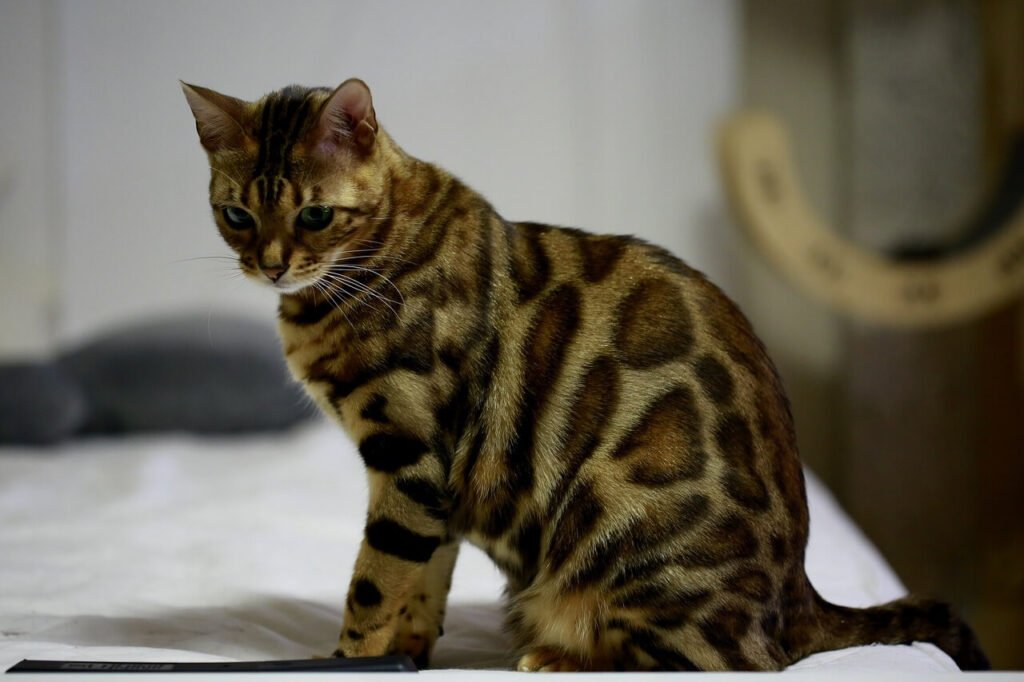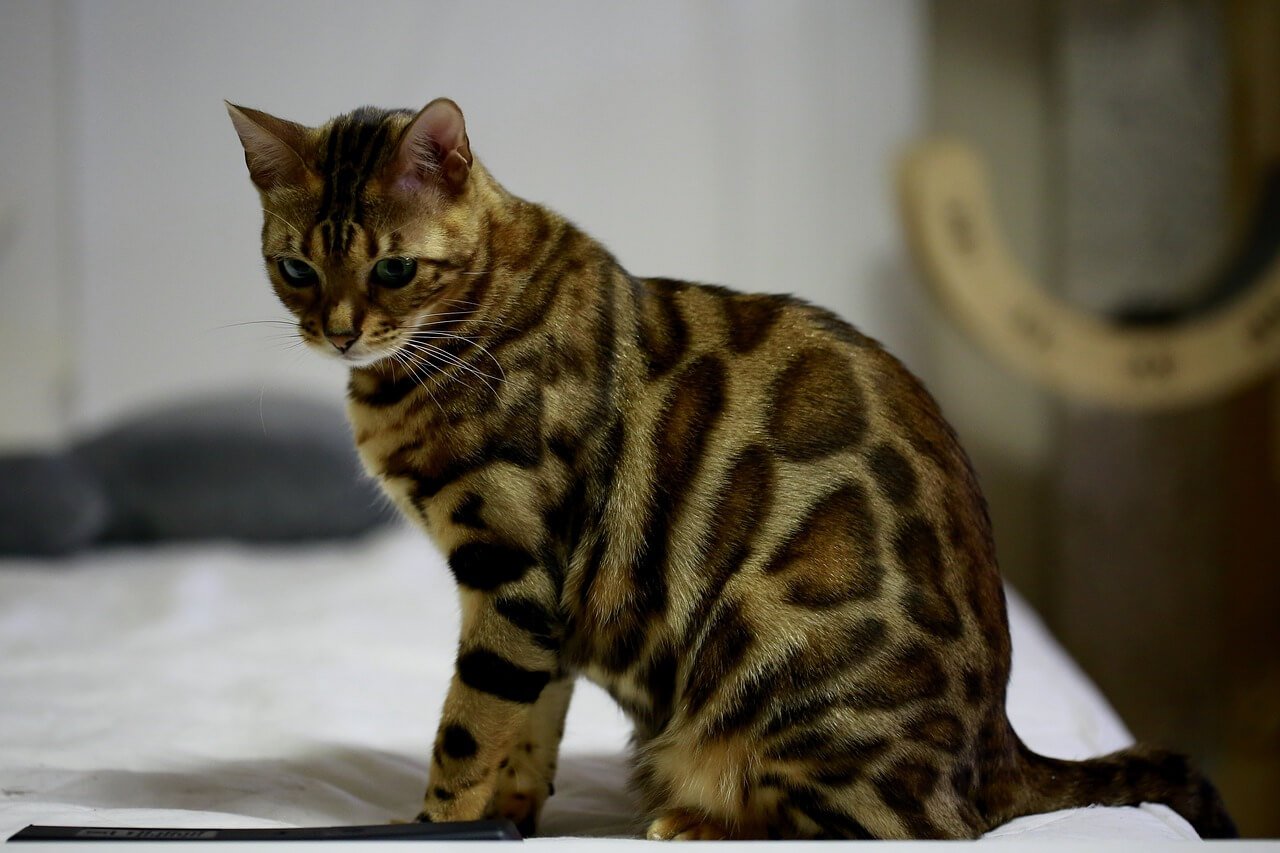How Big Does a Bengal Cat Get? Everything You Need to Know
If you’re considering adding a Bengal cat to your family, one of the first questions that might come to mind is, “How big does a Bengal cat get?” These stunning felines are known for their wild appearance and playful personalities, but understanding their size is crucial for ensuring they thrive in your home. In this blog post, we’ll explore everything about Bengal cats’ growth patterns, factors influencing their size, and how to care for them as they grow. Whether you’re a first-time Bengal owner or simply curious, this guide will provide all the answers you need!
Understanding the Average Size of a Bengal Cat
When it comes to Bengal cats, their size can vary depending on several factors such as genetics, diet, and overall health. Here’s a breakdown of what you can expect:
Male Bengal cats typically weigh between 10 to 15 pounds when fully grown.
Female Bengal cats are generally smaller, weighing between 8 to 12 pounds.
The height of a Bengal cat usually ranges from 13 to 16 inches at the shoulder.
Their body length, excluding the tail, averages around 18 to 24 inches.
Bengals have muscular builds, making them appear larger than other domestic breeds.
While these numbers give a general idea, remember that every Bengal is unique. Some may exceed these averages, while others might be slightly smaller. Regardless of their exact measurements, Bengals are known for their athletic and agile nature.
Factors That Influence a Bengal Cat’s Size
Several elements play a role in determining how big your Bengal cat will grow. Let’s take a closer look at these influences:
Genetics significantly impact a Bengal’s size. Kittens born to larger parents are likely to inherit similar traits.
Nutrition during kittenhood sets the foundation for healthy growth. A balanced diet rich in protein supports optimal development.
Exercise and activity levels also contribute to muscle tone and overall physique. Active Bengals tend to maintain leaner bodies.
Health conditions like obesity or malnutrition can alter a Bengal’s natural growth trajectory.
Spaying or neutering may slightly affect growth plates, potentially leading to slightly larger sizes in some cases.
By paying attention to these factors, you can help ensure your Bengal reaches its full potential while staying healthy and happy.
Check this guide 👉Bengal Cat Characteristics: Best 7 Expert Tips!
Check this guide 👉Bengal Cat Colors: Best 7 Expert Tips!
Check this guide 👉How Long Do Bengal Cats Live? Best 7 Expert Tips!

Factor Influencing Size | Impact on Bengal Cats |
|---|---|
Genetics | Determines baseline size potential |
Nutrition | Supports healthy bone and muscle growth |
Activity Level | Builds strong muscles and agility |
Health Conditions | Can hinder or enhance normal growth |
Spaying/Neutering | May slightly delay closure of growth plates |
Caring for Your Growing Bengal Cat
Proper care is essential to support your Bengal cat’s growth and well-being. Here are some tips to keep in mind:
Provide high-quality food formulated specifically for active breeds like Bengals.
Schedule regular vet check-ups to monitor growth milestones and address any concerns early.
Offer plenty of toys and climbing structures to encourage exercise and mental stimulation.
Create a safe environment free of hazards that could harm your growing kitten.
Establish a consistent feeding schedule to prevent overeating or underfeeding.
With the right approach, you can set your Bengal up for success and enjoy watching them flourish into a beautiful adult cat.
Common Misconceptions About Bengal Cat Sizes
There are many myths surrounding Bengal cat sizes. Let’s debunk some common misconceptions:
Not all Bengals are massive; size varies widely among individuals.
Males aren’t always significantly bigger than females—some overlap occurs naturally.
A Bengal’s weight doesn’t necessarily correlate with its height due to their muscular build.
Mixed-breed Bengals may differ in size compared to purebred ones.
Early spaying/neutering won’t drastically change a Bengal’s final size.
Understanding these truths helps paint a clearer picture of what to expect from your Bengal companion.
Bengal Cat Size Compared to Other Breeds
When comparing Bengal cats to other popular breeds, their size stands out as both unique and impressive. While they aren’t the largest domestic cats, their muscular build and athletic frame make them appear more substantial than many other breeds. Here’s how Bengals stack up:
Bengals are medium to large-sized cats, often weighing more than Siamese or Abyssinians.
Compared to Maine Coons, Bengals are smaller but tend to have a leaner, more toned physique.
Ragdolls may outweigh Bengals, but Bengals are known for their agility rather than sheer bulk.
British Shorthairs share a similar weight range but lack the sleek, athletic appearance of Bengals.
Savannah cats, another hybrid breed, are typically larger than Bengals, but Bengals are more common as pets.
In conclusion, while Bengals may not be the biggest cats around, their combination of size, strength, and grace makes them truly stand out among feline breeds.
Tips for Managing a Growing Bengal Cat’s Diet
A Bengal cat’s diet plays a crucial role in determining its final size and overall health. Feeding them the right nutrients at the right time ensures they grow into strong, healthy adults. Consider these tips for managing their nutrition:
Choose high-protein cat food to support muscle development and energy levels.
Avoid overfeeding, as excessive calories can lead to obesity and health issues.
Provide fresh water at all times to keep your Bengal hydrated and aid digestion.
Introduce wet food alongside dry kibble for a balanced and varied diet.
Consult your veterinarian before making significant changes to your cat’s meal plan.
By prioritizing proper nutrition, you can help your Bengal achieve its ideal size while maintaining optimal health throughout its life.
Fun Facts About Bengal Cats’ Growth Patterns
Bengal cats have fascinating growth patterns that set them apart from other breeds. Their journey from playful kittens to majestic adults is full of interesting milestones. Here are some fun facts about their growth:
Bengal kittens often double their birth weight within the first two weeks of life.
Most Bengals experience rapid growth during their first six months, then slow down gradually.
Their coat patterns become more defined and vibrant as they mature into adulthood.
Bengals retain their playful kitten-like energy even after reaching their full size.
Some Bengals take up to two years to fully “fill out” and develop their muscular physique.
Understanding these quirks of Bengal growth adds to the joy of watching them transform into stunning adult cats.
Frequently Asked Questions About Bengal Cat Sizes
At what age do Bengal cats stop growing?
Most Bengals reach their full size by 18 months, though some may continue filling out until they’re two years old.
Do male Bengal cats grow faster than females?
Yes, males often grow faster and end up larger than females, but individual rates can vary.
Can I predict my Bengal kitten’s adult size?
While genetics offer clues, predicting exact size isn’t foolproof since nutrition and lifestyle also play roles.
Is it normal for Bengals to be smaller than expected?
Yes, some Bengals fall below average due to genetics or other factors, which doesn’t mean there’s anything wrong.
Does exercise affect a Bengal’s size?
Exercise primarily affects muscle tone rather than overall size, but an inactive Bengal may appear less fit.
Final Thoughts: Embrace Your Bengal’s Unique Size
Every Bengal cat has its own personality and physical characteristics, including size. Whether your feline friend grows to be on the larger side or stays petite, their charm lies in their distinctive markings, energetic demeanor, and loving nature. By providing proper care, nutrition, and attention, you can ensure your Bengal thrives regardless of their dimensions. Remember, no matter how big or small they get, Bengal cats bring joy and excitement to any household lucky enough to have them.
Understanding Cryptosporidium in Cats: Best 7 Expert Tips! – Spot symptoms, treat safely, and stop parasite spread in your home.
Understanding Cryptosporidium in Dogs: Best 7 Expert Tips! – Learn symptoms, treatment & prevention for this stubborn gut parasite.
Understanding Syringomyelia in Cats: Best 7 Expert Tips! – Recognize signs, manage pain, and support your cat’s neurological health with vet-backed guidance.
Understanding Syringomyelia in Dogs: Best 7 Expert Tips! – Expert insights on symptoms, MRI diagnosis, pain management & quality of life.





